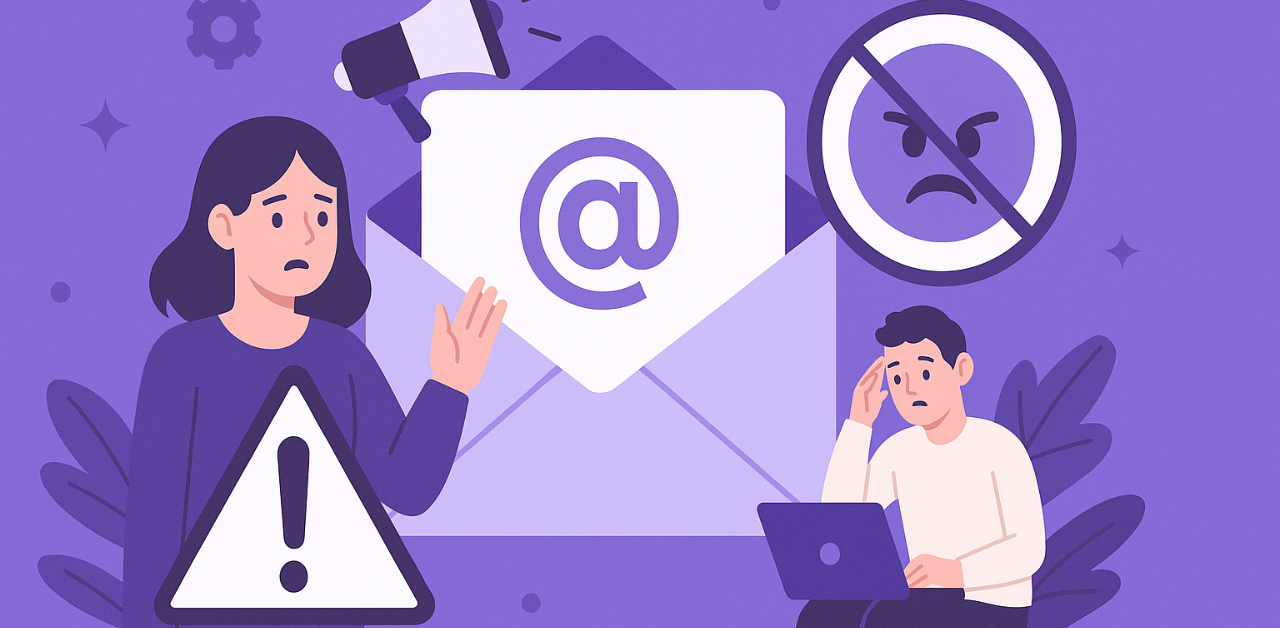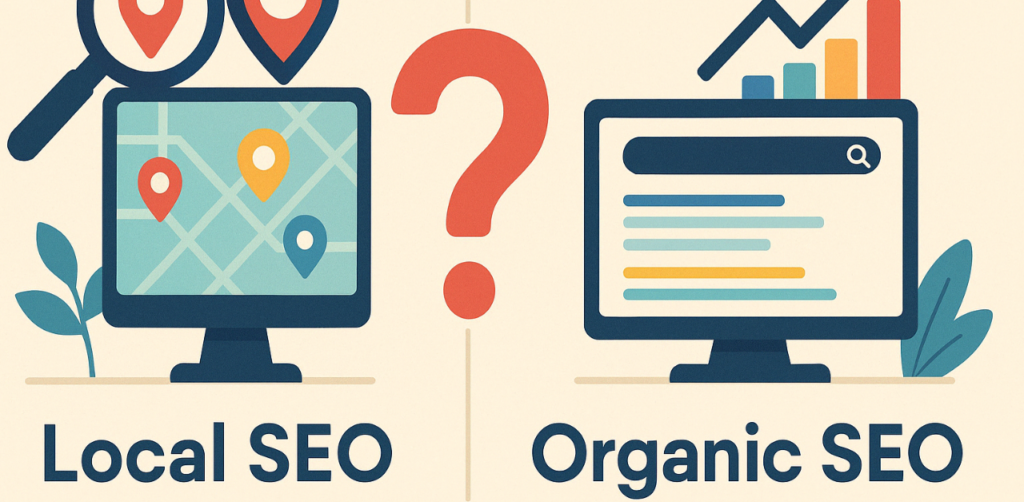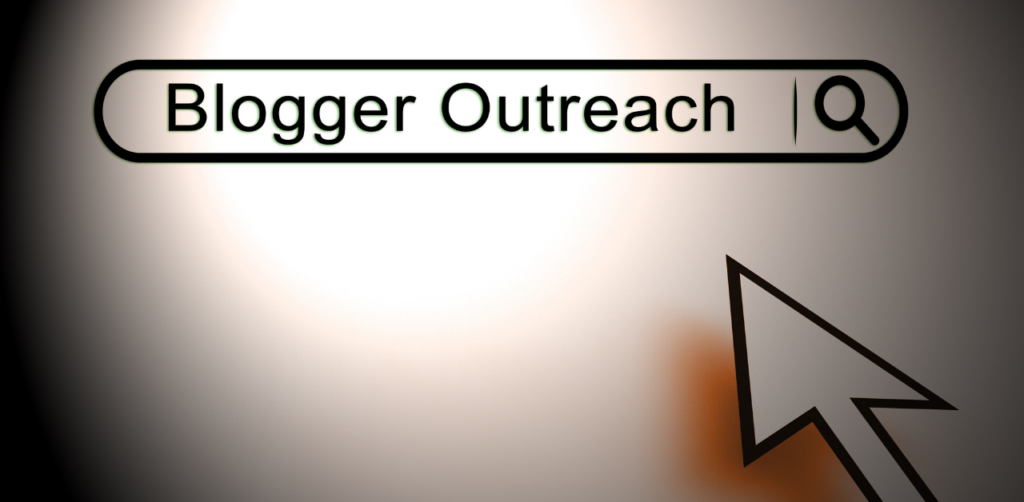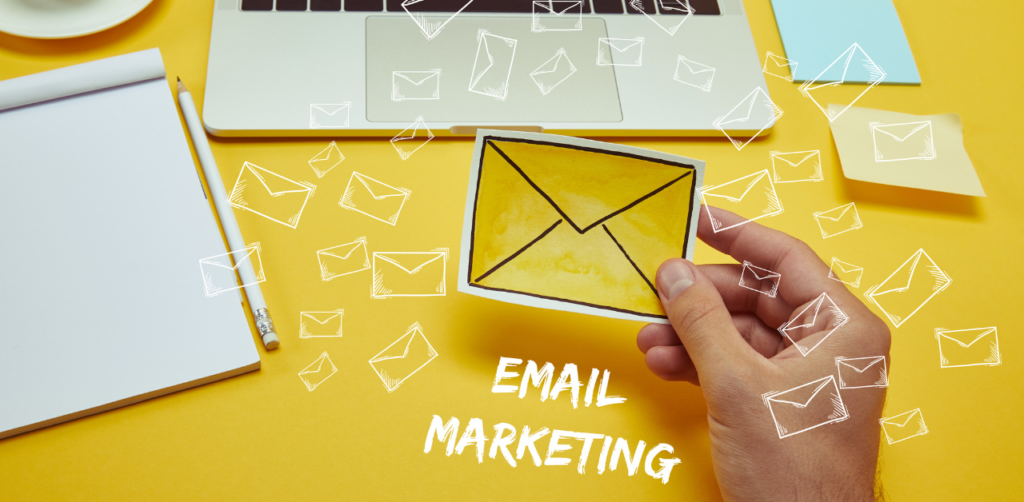The dos and don’ts of email marketing:
| Do’s of Email Marketing | Don’ts of Email Marketing |
| Build your list organically | Don’t purchase email lists |
| Segment your audience | Avoid sending too many emails |
| Create clear and engaging subject lines | Don’t use misleading subject lines |
| Optimize for mobile devices | Avoid overloading emails with images or links |
| Include a clear call to action (CTA) | Don’t neglect compliance regulations |
| Test and analyze your emails | Avoid using ‘no-reply’ email addresses |
A Reddit user shared that, although they were initially skeptical, cold email outreach proved highly effective when carefully targeted. They emphasized that while open and response rates weren’t as high as broader campaigns, the leads generated through precise targeting converted at a much higher rate — valuing quality over quantity.
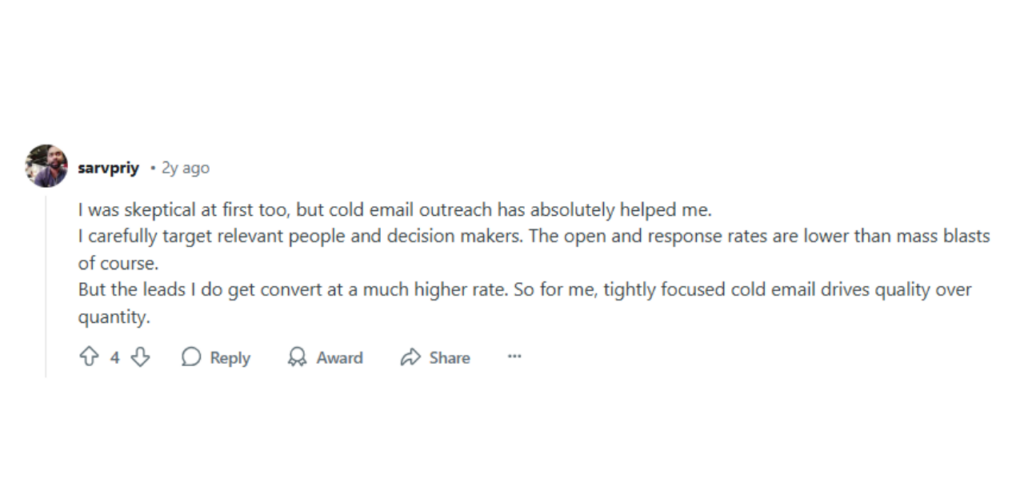
Another user highlighted that many e-commerce brands now aim to drive 30% of their total revenue through email marketing alone. That’s why implementing email marketing to your business is a must.
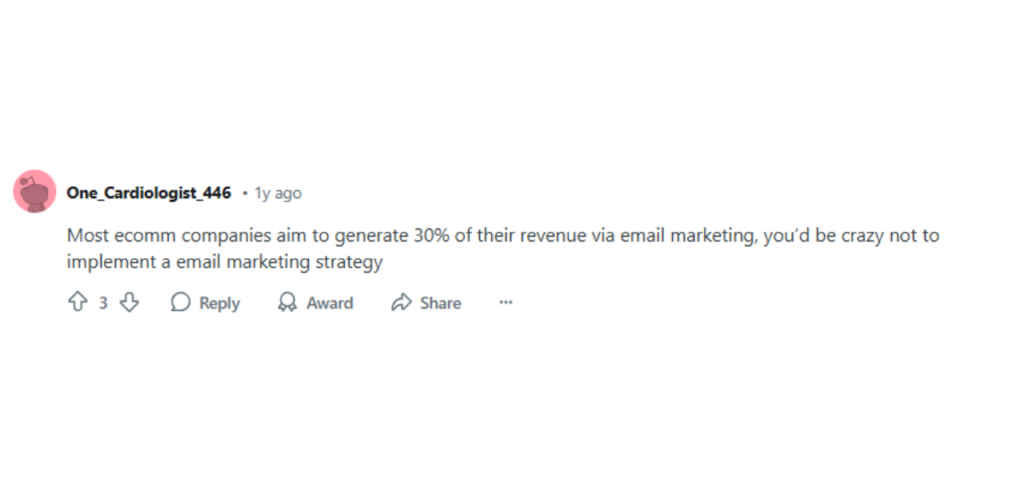
When done right, email marketing remains one of the most powerful tools for building customer relationships and driving revenue. However, achieving success requires more than just sending out mass emails and hoping for the best. Following the right strategies make the difference between thriving campaigns and ones that fall flat.
This article shares more details on the specific tactics you can use in your email marketing strategy to maximize your results — without falling into common traps.
✅ Email Marketing Dos
1. Build Your List Organically
Always grow your email list through opt-in forms, website signups, or social media promotions. When people willingly give their email addresses, they are much more likely to engage with your emails.
- Use pop-ups that offer valuable content like discounts or free guides.
- Add signup forms on high-traffic pages.
- Collect emails at events or in-store.
Building your list organically means connecting with people who genuinely want to hear from you, thereby strengthening your marketing strategy.
2. Segment Your Audience
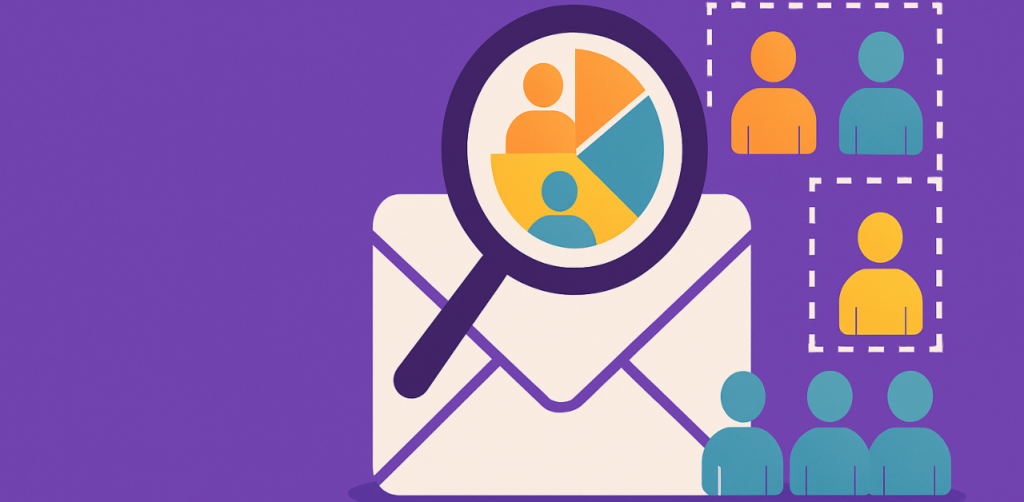
Not every subscriber is the same. Segment your email list based on factors like purchase history, interests, location, or engagement level. This enables you to send relevant content that feels personalized, resulting in higher open and conversion rates.
Examples of segments:
- New subscribers
- Past customers
- High spenders
- Inactive subscribers
When you send targeted messages, you capture attention and demonstrate to subscribers that you understand their needs.
3. Craft Clear and Engaging Subject Lines
Your subject line is the first thing people see. If it’s boring or unclear, your email might never get opened.
Tips for strong subject lines:
- Keep it short (under 50 characters)
- Be direct and clear
- Create curiosity, but don’t mislead
- Personalize it when possible (using names or recent activity)
Effective subject lines can enhance your click-through rates and ensure that your marketing emails are actually read.
4. Optimize for Mobile Devices
Most people read emails on their phones. If your email doesn’t display correctly on mobile, you lose potential customers fast.
- Use mobile-friendly email design
- Keep paragraphs short
- Make buttons large enough to tap easily
- Test your emails on multiple devices before sending
Optimizing for mobile ensures your campaigns are easy to read and interact with on any screen.
5. Include a Clear Call to Action (CTA)
Every email should have a purpose. Always include a clear call to action that instructs recipients on the next step. Examples are:
- Shop Now
- Sign Up
- Learn More
- Download
Position your CTA clearly and early in the email. A confusing or missing CTA means your readers won’t know what action you want them to take.
6. Test and Analyze Your Emails
Don’t guess what works — test it. A/B testing different subject lines, images, or layouts helps you understand what your audience responds to. Focus on these metrics:
- Open rates
- Click-through rates
- Unsubscribes
- Spam complaints
Use this data to fine-tune your email marketing strategy and improve future emails.
❌ Email Marketing Don’ts
1. Don’t Purchase Email Lists
Buying email lists seems like a fast solution, but it leads to low engagement, spam complaints, and even blacklisting. Instead, create your own list through genuine connections. Sending promotional messages to strangers damages your brand and trust.
2. Avoid Sending Too Many Emails

Bombarding subscribers with daily emails can cause irritation and a spike in unsubscribe rates. Stick to a reasonable schedule that keeps your brand top of mind without annoying your audience. Test different frequencies to find the sweet spot for your list.
3. Don’t Use Misleading Subject Lines
Tricking people into opening emails with false promises ruins your credibility. Be honest and match your subject line to the actual email content. Misleading subject lines may cause recipients to report you as spam, hurting your sender’s reputation.
4. Avoid Overloading Emails with Images or Links
Too many images or links can trigger spam filters and slow load times.
- Use one or two images to support your message.
- Keep links relevant and limited to essential calls to action.
Simple, clean emails perform better and are easier for readers to respond to.
5. Don’t Neglect Compliance Regulations
Follow laws like CAN-SPAM (U.S.) or GDPR (Europe) to avoid fines and penalties. Always:
- Include an unsubscribe option
- Identify your business clearly
- Respect opt-out requests
Following rules protects your company and builds trust with your subscribers.
6. Avoid Using ‘No-Reply’ Email Addresses
Nothing frustrates recipients more than receiving promotional messages they can’t reply to. A “no-reply” address makes your brand seem distant and unapproachable. Use an address that invites conversation, like [email protected], to encourage readers to ask questions or connect.
How Often Should I Send Marketing Emails?
The correct frequency depends on your target audience and business objectives. A good starting point is once a week. Some tips include:
- Weekly newsletters work well for most companies.
- Promotional emails can be sent during sales or special events.
- Monitor your unsubscribe rates and adjust if necessary.
Test different schedules and listen to feedback. Regularly sending relevant, valuable content is better than sending emails to meet a quota.
What Are Effective Strategies for Email List Building?
Growing your email list is easier with the right tactics:
- Offer freebies like guides, discounts, or webinars.
- Use pop-up forms with clear benefits.
- Run contests or giveaways on social media.
- Add opt-in forms at checkout or after blog posts.
Always clearly state what subscribers will receive when they sign up. People are more likely to share their email if they expect something valuable in return.
How Do I Ensure My Emails Aren’t Marked as Spam?
Avoiding the spam folder is essential for email marketing success. Make sure you:
- Use double opt-in methods.
- Personalize your emails.
- Keep your list clean by removing inactive subscribers.
- Avoid spammy words like “free” or “urgent” in the subject line.
- Send from a verified domain.
Taking special care with your email campaigns helps keep your messages where they belong—in the inbox.
What Is the Importance of Personalization in Email Marketing?
Personalization makes your emails feel relevant and welcoming. It’s not just about using a first name — it’s about sending messages that match your recipients’ interests, behaviors, and needs. Examples:
- Recommend products based on purchase history.
- Send birthday greetings or special anniversary offers.
- Share content based on previous clicks.
Personalized emails demonstrate to customers that you care about them, resulting in higher engagement and improved sales.
Moving Forward with Stronger Email Marketing
When done right, email marketing can build lasting relationships and drive strong conversion rates. By following the dos and don’ts of email marketing, you give yourself a much better chance of achieving real business growth.
At Web Search Marketing, our team helps companies refine their email marketing strategies for real-world success. Whether you need help crafting the right subject line, enhancing your campaigns, or expanding your audience, we can help you achieve your goals.
If you’re serious about more substantial email marketing efforts that deliver, book a consultation with Web Search Marketing today and start building better results!
